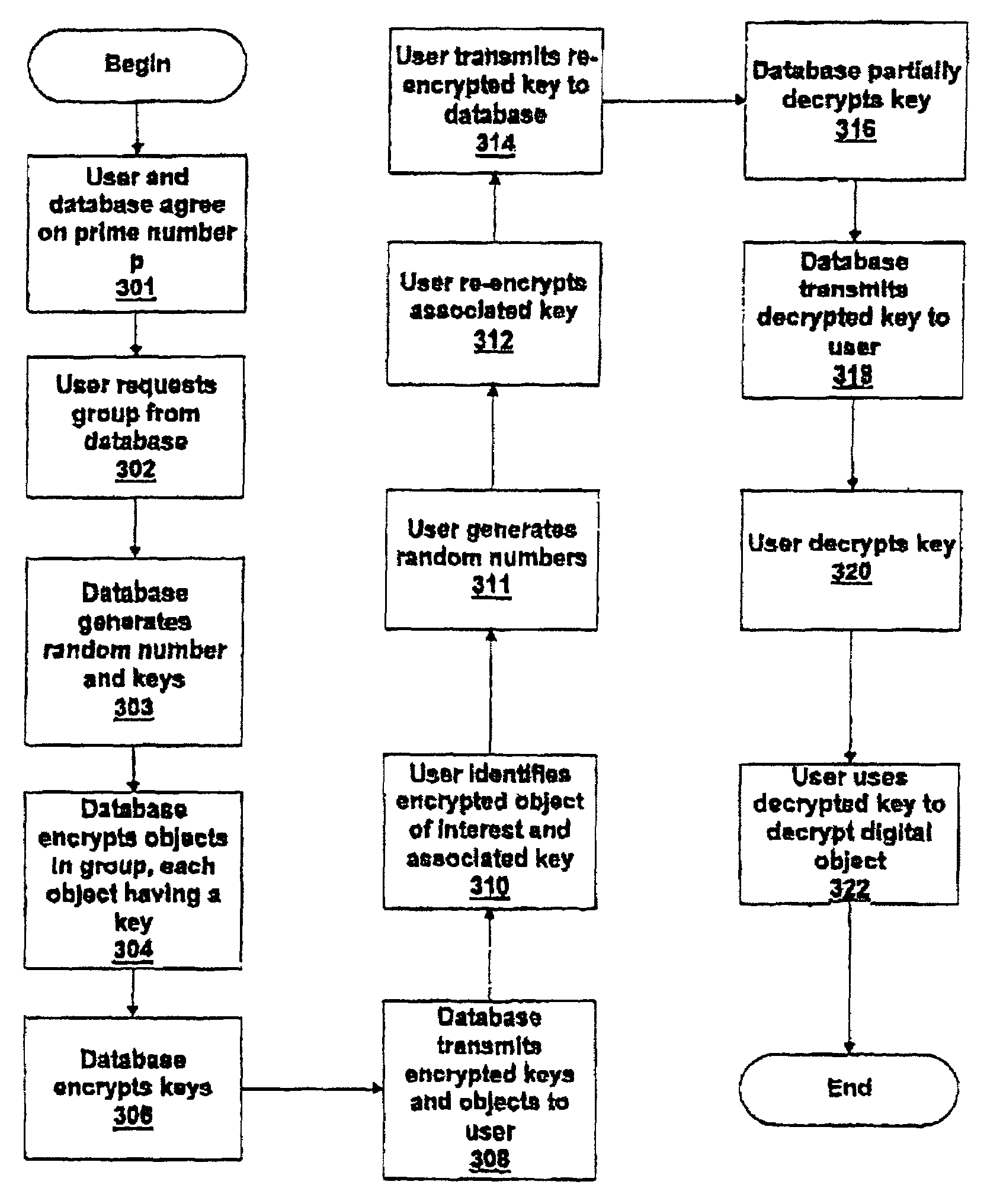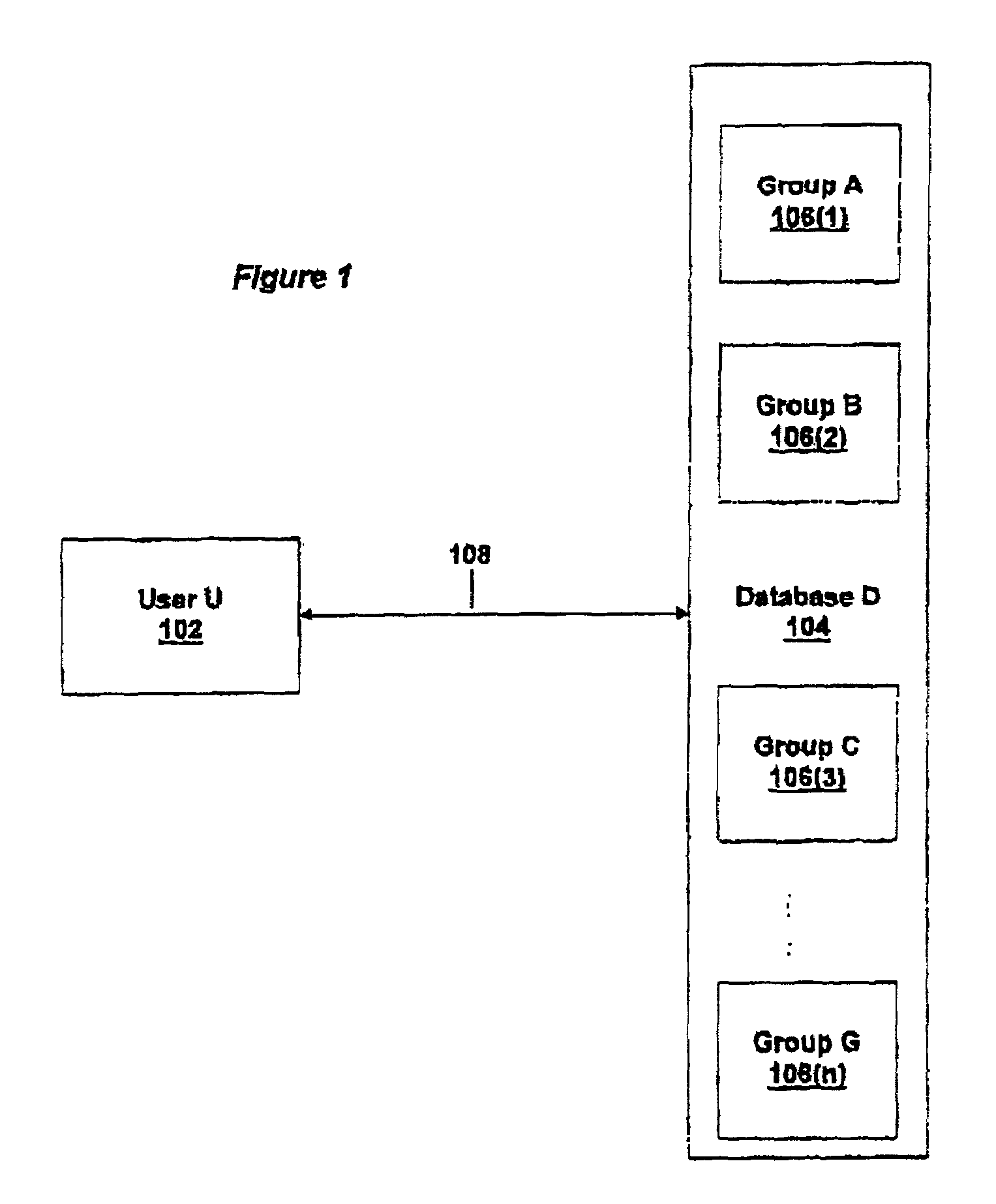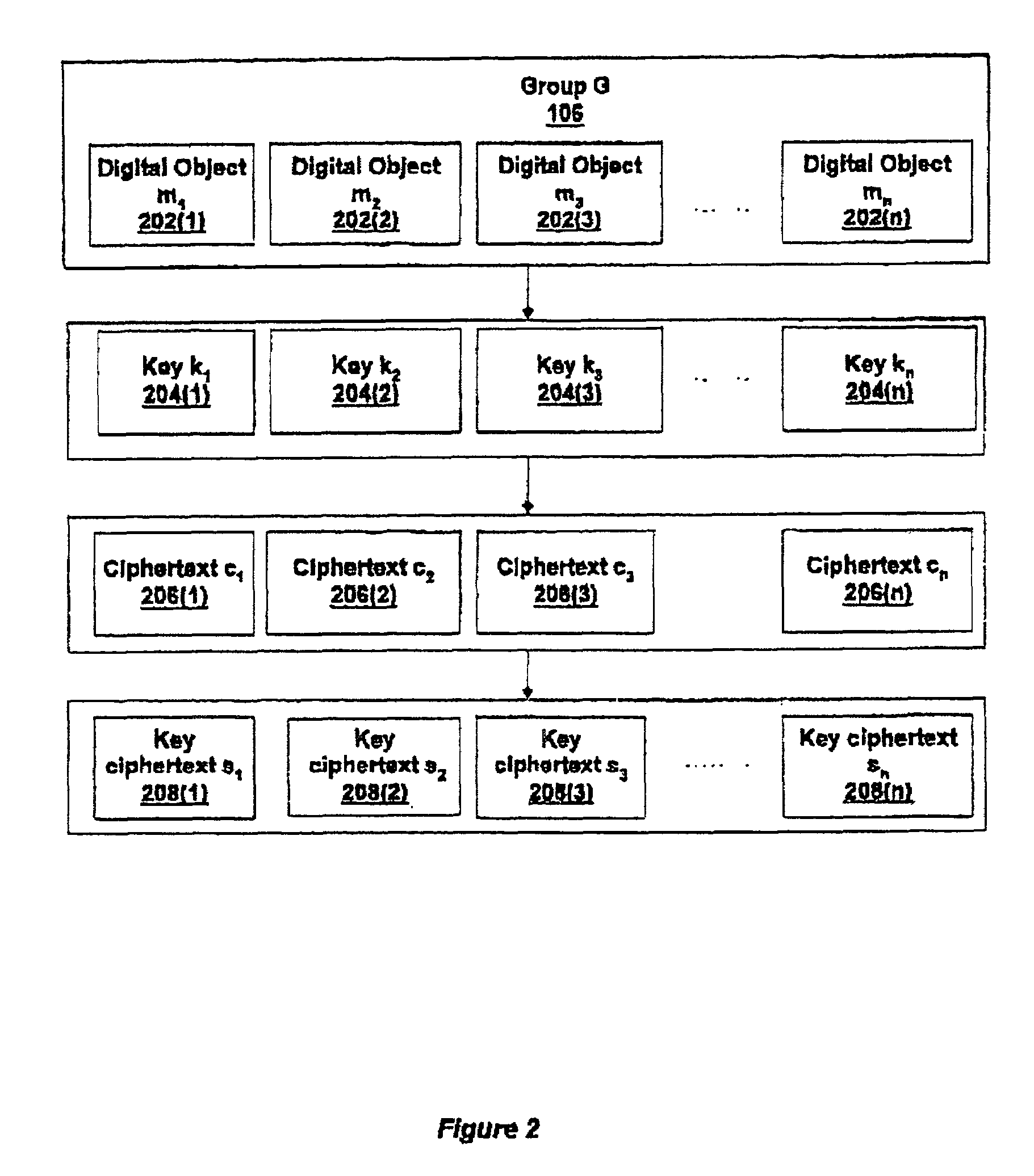Private retrieval of digital objects
a digital object and private technology, applied in the field of private retrieval of digital objects, can solve the problems of prohibitively large computational costs of these solutions, out of the control of the user and the ability to independently verify, and achieve the effect of reducing communication costs and improving user experien
- Summary
- Abstract
- Description
- Claims
- Application Information
AI Technical Summary
Benefits of technology
Problems solved by technology
Method used
Image
Examples
Embodiment Construction
[0030]A cryptographic system, or cryptosystem, has an encryption key to convert plaintext into ciphertext and a decryption key to recover the plaintext from ciphertext. If the encryption key and the decryption key are identical, the cryptosystem is called a symmetric key cryptosystem. If the encryption key and the decryption key are different and it is computationally infeasible to determine the decryption key from the mathematically-related encryption key, the cryptosystem is called an asymmetric key cryptosystem, or a public key cryptosystem. For illustrative purposes, the preferred embodiments described here make reference to symmetric key cryptosystems for encryption and decryption. It will be apparent to those skilled in the art, however, that asymmetric key cryptosystems could also be used. See, for example, A. Menezes, P. Oorschot, and S. Vanstone, Handbook of Applied Cryptography, CRC Press, 1996, or C. Kaufman, R. Perlman, and M. Speciner, Network Security-Private Communica...
PUM
 Login to View More
Login to View More Abstract
Description
Claims
Application Information
 Login to View More
Login to View More - R&D
- Intellectual Property
- Life Sciences
- Materials
- Tech Scout
- Unparalleled Data Quality
- Higher Quality Content
- 60% Fewer Hallucinations
Browse by: Latest US Patents, China's latest patents, Technical Efficacy Thesaurus, Application Domain, Technology Topic, Popular Technical Reports.
© 2025 PatSnap. All rights reserved.Legal|Privacy policy|Modern Slavery Act Transparency Statement|Sitemap|About US| Contact US: help@patsnap.com



